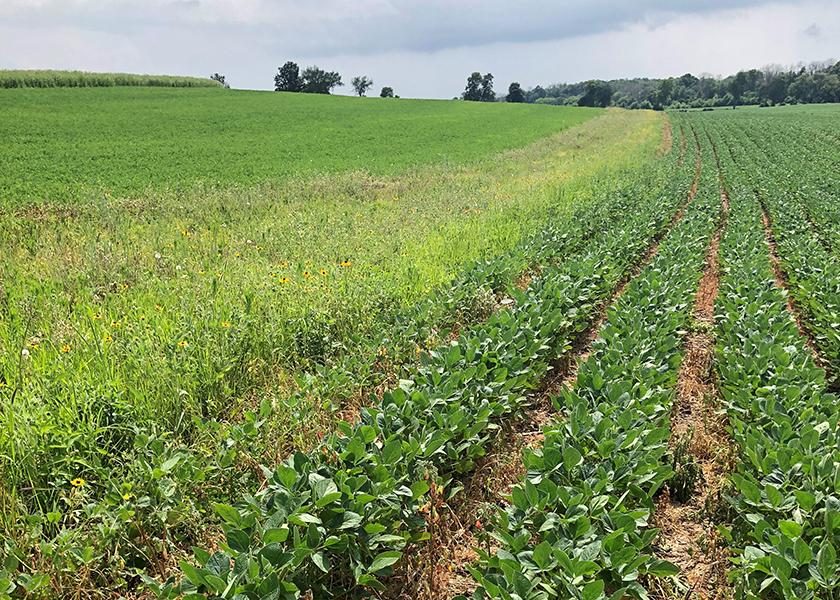EPA Awards ‘Farmer to Farmer’ Grant to Sand County Foundation

The U.S. Environmental Protection Agency has awarded Sand County Foundation a grant to empower farmers with real-time data about their conservation practices.
Sand County Foundation’s project will provide 30 collaborating farmers in Minnesota and Wisconsin with on-farm data of how their management influences soil trafficability, temperature, nutrient runoff potential, and other factors.
The project titled, “Show Me the Data! Empowering Conservation Champions with Innovative Real-Time Soil Metrics” was awarded $997,383 from the EPA. It’s one of 12 projects the EPA selected to receive “Farm to Farmer” grant funding totaling nearly $11 million.
“Farmers are seeking real-time data to guide in-season decision making,” said Dr. Heidi Peterson, Sand County Foundation’s Vice President of Agricultural Conservation and Research.
She noted that often farmers have to rely on anecdotal observations of how their management decisions are affecting a field’s soil moisture and temperature.
“To meet this need, we teamed up with Farmers Edge and the University of Minnesota to develop this demonstration,” Peterson explained. “Sensor technology installed by Farmers Edge allows our participants to compare field data and understand how their management influences soil properties critical to climate resiliency and nutrient transport.”
The EPA’s “Farmer to Farmer” grants support the leadership of farmers in improving water quality, habitat, resilience, and peer-to-peer information exchange to benefit community and ecosystems in the Gulf of Mexico Watershed. Farmers manage millions of acres of privately held working lands within the Gulf of Mexico Watershed. Conservation management can minimize pollution, specifically the excess nitrogen and phosphorus that can enter waterbodies through runoff or soil erosion.
“EPA is proud to support the leadership of farmers and their innovative approaches to improve water quality while working to fuel and feed the world,” said EPA Administrator Michael S. Regan. “EPA is committed to meaningful partnerships with farmers to advance sustainable agriculture practices while creating healthy, clean, and safe environments for all.”
In addition to the farmer collaborators, Farmers Edge and the University of Minnesota, other key partners in the project include: Minnesota Department of Agriculture, Minnesota Soil Health Coalition, Benton Soil & Water Conservation District, Mower Soil and Water Conservation District, Soil Solutions Consulting LLC, Watershed Protection Committee of Racine County; and Dodge County Farmers, Healthy Soil Healthy Water.
Background
The Farmer to Farmer grant funding is available to develop innovative practices within farming communities, measure the results of those practices, and identify how the practices will be incorporated into farming operations. Under this grant program, proposals will carry out project activities using one or more of the following methods: surveys, studies, research, investigation, experimentation, education, training, and/or demonstrations.
The Gulf of Mexico Division is a non-regulatory program of EPA founded to facilitate collaborative actions to protect, maintain, and restore the health and productivity of the Gulf of Mexico in ways consistent with the economic well-being of the region. To carry out its mission, the Gulf of Mexico Division continues to maintain and expand partnerships with state and federal agencies, federally recognized tribes, local governments and authorities, academia, regional business and industry, agricultural and environmental organizations, and individual citizens and communities.
For more information, visit https://www.epa.gov/gulfofmexico







